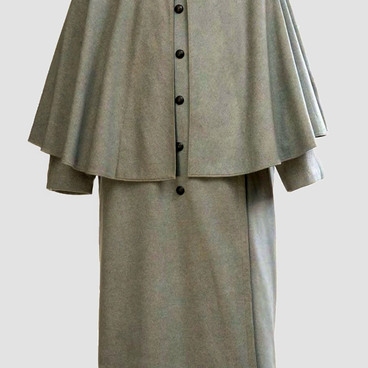You’re looking at a battlefield motion picture camera, which belonged to David Ibragimov, a documentary cameraman from Saratov. In 1930, he started to work on documentaries. Initially he worked on lighting, before then becoming an assistant cameraman at the Nizhne-Volzhskaya documentary studio in Saratov. From 1936, Ibragimov started to shoot films for local and union television as a cameraman. In 1939, he finished his studies in camera operation at the State Institute of Cinematography, Moscow. Before the war, David Ibragimov shot a great deal of film of aviation and pilots, and even completed flight training. At the end of 1941, he was part of a group of battlefield cameramen on the South-Western front, and in February 1942, he was seconded to the fourth reserve air squadron. Ibragimov was given an ‘Eyemo’ American motion picture camera, made by Bell and Powell. It was specially designed for filming aerial shots. He tried to convey people’s characters and not only filmed military action, but also the pilots’ lives on the ground: the return from combat missions and everyday life in the breaks between flights. Generally, Ibragimov shot film from bombers, sitting where the gunner usually would. If needed, the cameraman would put down their camera and pick up their weapon. Ibragimov shot the aerial battles throughout the entire battle of Stalingrad. For the film ‘The N-Division’s Combat Days’, which came out in 1942, he was the recipient of the State prize.
After defeating the Germans at Stalingrad, David Ibragimov filmed at the battle of Kursk and the liberation of Ukraine, Belarus and Eastern European countries. Ibragimov was entrusted to film Japan’s signing of the act of surrender on 2 September 1945. The films captured by Ibragimov on his Eyemo motion picture camera were included in the film chronicle of the Great Patriotic War and were used in many documentary films, including ‘Stalingrad, ‘The Oryol-Kursk Ark’, ‘The Liberation of Gomel’, ‘Kalinkavichy and Mazyr’, ‘From Vistula to Oder’, ‘Ukraine in Flames’, ‘Berlin’, ‘The Fall of Japan’, ‘Triumph Over Violence’ and ‘The Unknown War’ — a twenty-part film co-produced by the USSR and the USA.
After the war, Ibragimov worked at the Nizhne-Volzhskaya studio of Cinematography in Saratov whilst also continuing to film motion pictures with the same camera he used during the war. In 1969, a camera was given to Ibragimov in commemoration for his battlefield films.
After defeating the Germans at Stalingrad, David Ibragimov filmed at the battle of Kursk and the liberation of Ukraine, Belarus and Eastern European countries. Ibragimov was entrusted to film Japan’s signing of the act of surrender on 2 September 1945. The films captured by Ibragimov on his Eyemo motion picture camera were included in the film chronicle of the Great Patriotic War and were used in many documentary films, including ‘Stalingrad, ‘The Oryol-Kursk Ark’, ‘The Liberation of Gomel’, ‘Kalinkavichy and Mazyr’, ‘From Vistula to Oder’, ‘Ukraine in Flames’, ‘Berlin’, ‘The Fall of Japan’, ‘Triumph Over Violence’ and ‘The Unknown War’ — a twenty-part film co-produced by the USSR and the USA.
After the war, Ibragimov worked at the Nizhne-Volzhskaya studio of Cinematography in Saratov whilst also continuing to film motion pictures with the same camera he used during the war. In 1969, a camera was given to Ibragimov in commemoration for his battlefield films.



